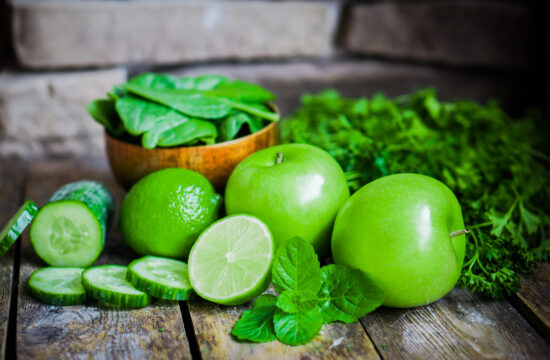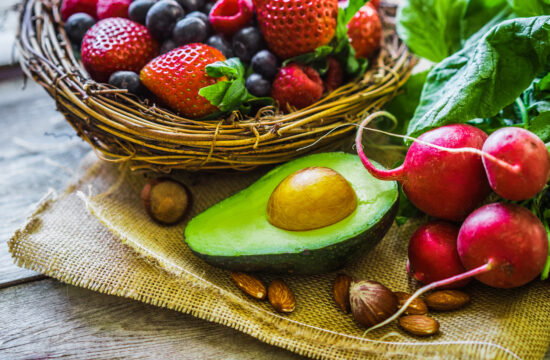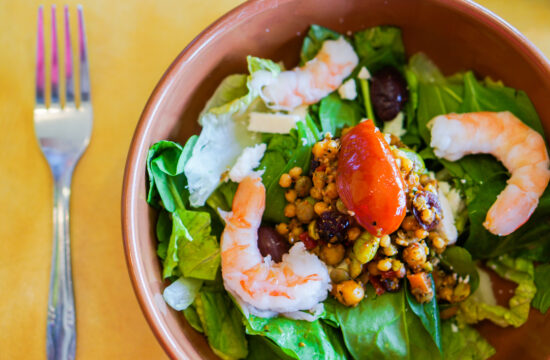Focus on Whole Foods
Understanding Whole Foods
Alright, let’s kick things off by diving into what whole foods really are. Basically, these are foods that are as close to their natural state as possible. Think fresh fruits and veggies, whole grains, nuts, and seeds. When I first transitioned to a more whole food-based diet, it completely changed my perspective on what I was putting into my body. Not only did I feel better, but my cravings for junk food started to fade away.
The beauty of whole foods is their nutrient density. Unlike processed foods, they’re packed with vitamins, minerals, and fiber, which helps keep you feeling full longer. Imagine munching on a crispy apple versus a sugary snack bar – one fills you up, while the other leaves you wanting more snacks soon after!
Need a Strong Nutrition Boost for Your Diet? Take a Look...
When shopping, I make it a point to stick to the perimeter of the grocery store. That’s where the fresh produce and whole foods are generally located. The inner aisles are often where the processed items lurk. By focusing on whole foods, I’m not just helping myself shed belly fat, but I’m also enjoying a healthier lifestyle overall.
Hydration is Key
The Importance of Water
If there’s one thing I can’t stress enough, it’s hydration! Drinking enough water has not only helped with my overall health, but it’s also been a game changer for my belly fat journey. Water helps boost your metabolism and can even reduce hunger. I always keep a water bottle near me to make sure I’m sipping throughout the day.
Personal experience? I used to think fruit juices or flavored drinks were a good substitute. Wrong! Those often contain hidden sugars and calories. Now, I aim for at least eight glasses of water a day. If plain water feels boring, add some slices of lemon, cucumber or mint to jazz it up a bit!
Staying hydrated also supports digestion, which is crucial when you’re focusing on reducing belly fat. I noticed that on days when I drink plenty of water, my body feels lighter and more energetic. Remember, hydrating isn’t just about drinking; things like soups and water-rich fruits count, too!
Need a Strong Nutrition Boost for Your Diet? Take a Look...
Mindful Eating
What is Mindful Eating?
So let’s chat about mindful eating – this was a real revelation for me. It involves paying full attention to what I’m eating, savoring each bite, and recognizing when I’m full. This concept transformed my relationship with food. Instead of blasting through meals while scrolling on my phone, I actually started enjoying my meals.
One tip I found helpful is to put my phone down and turn off the TV during meals. Focus on the flavors and textures of your food. Believe me, you’ll not only appreciate what you’re eating more, but you’ll likely find you eat less. By slowing down, I’ve noticed my need for snacks between meals has diminished.
Another aspect of this is recognizing emotional eating. Sometimes, I’d grab snacks out of boredom or stress instead of genuine hunger. Keeping a food journal has helped me identify these patterns and adjust my eating habits accordingly. It’s about connecting with your body and listening to what it truly needs.
Incorporate Healthy Fats
Understanding Healthy Fats
Contrary to popular belief, not all fats are out to get you. Healthy fats like those from avocados, nuts, and olive oil can actually aid in weight loss, including that pesky belly fat. I used to fear fat in my diet, thinking it would make me gain weight, but good fats can actually keep you satiated and help with fat-soluble vitamin absorption.
Good HealthY DIETING Solution is Easier Than Most People Think!
Take a Look for Yourself!
One of my go-to snacks these days is a handful of mixed nuts or a slice of avocado on whole-grain toast. They fill me up and keep cravings at bay. Plus, the way healthy fats support heart health is a major bonus! It’s all about balance, and I’ve learned to love and appreciate these nourishing fats.
Pairing healthy fats with other food groups in my meals also keeps things interesting. Think about mixing olive oil and lemon juice for a salad dressing or pairing nut butter with fruits. It’s all about making it tasty while staying aligned with healthier choices!
Stay Active
Find Activities You Love
Let’s face it; incorporating activity into your lifestyle shouldn’t feel like punishment. Finding activities you genuinely enjoy made all the difference for me. Whether it’s walking, dancing, or yoga, I’ve learned to prioritize movement in a fun way instead of self-imposed workouts that feel like a chore.
When I first started out, I set small, achievable goals. Instead of saying, “I’m going to the gym five days a week,” I committed to taking a short walk after dinner or trying a new dance class. It’s amazing how those little bits of movement really add up over time.
The best part is, staying active not only helps burn calories but also improves mood and energy levels. Who doesn’t want to feel more energized? So, whether it’s biking, hiking, or even gardening, find something you love. And trust me, consistency is crucial; it’s about making movement a regular part of your day!
Frequently Asked Questions
1. Can I lose belly fat by only changing my diet?
While diet plays a major role in fat loss, incorporating exercise is equally important. A combination of healthy eating and physical activity yields the best results.
2. Are there specific foods that help reduce belly fat?
Yes! Foods high in fiber, lean proteins, and healthy fats can help. Think whole grains, fruits, vegetables, fish, and nuts.
3. How much water should I drink daily?
Aiming for at least eight glasses a day is a good start, but listen to your body’s needs. More may be necessary depending on your activity level.
4. What is the best time to eat for fat loss?
It’s all about balance. Eating smaller, more frequent meals throughout the day can help maintain energy and manage hunger.
5. How quickly can I expect to see results?
Results can vary based on several factors, but with consistency in diet and exercise, many people start to see changes within a few weeks.












